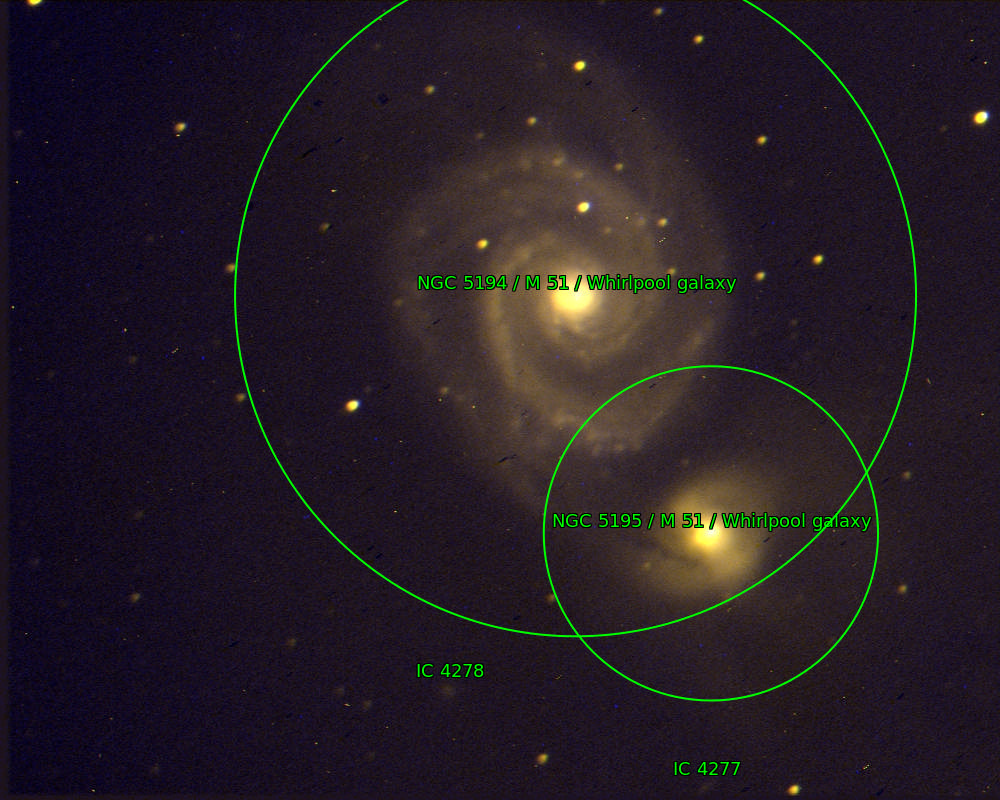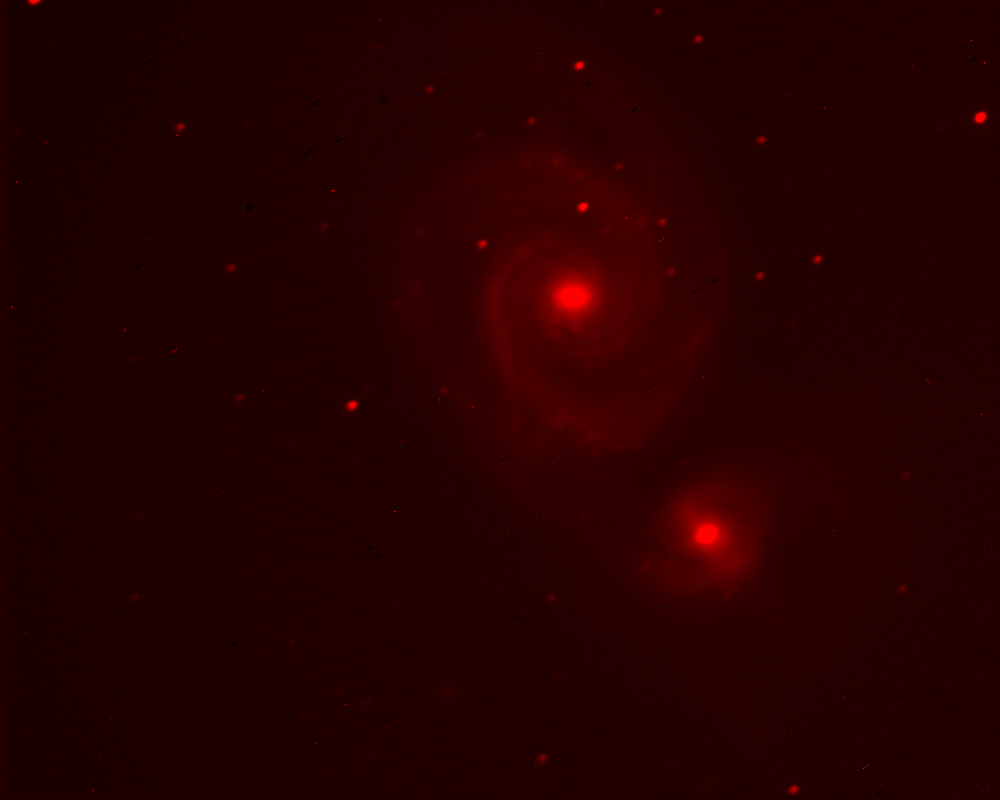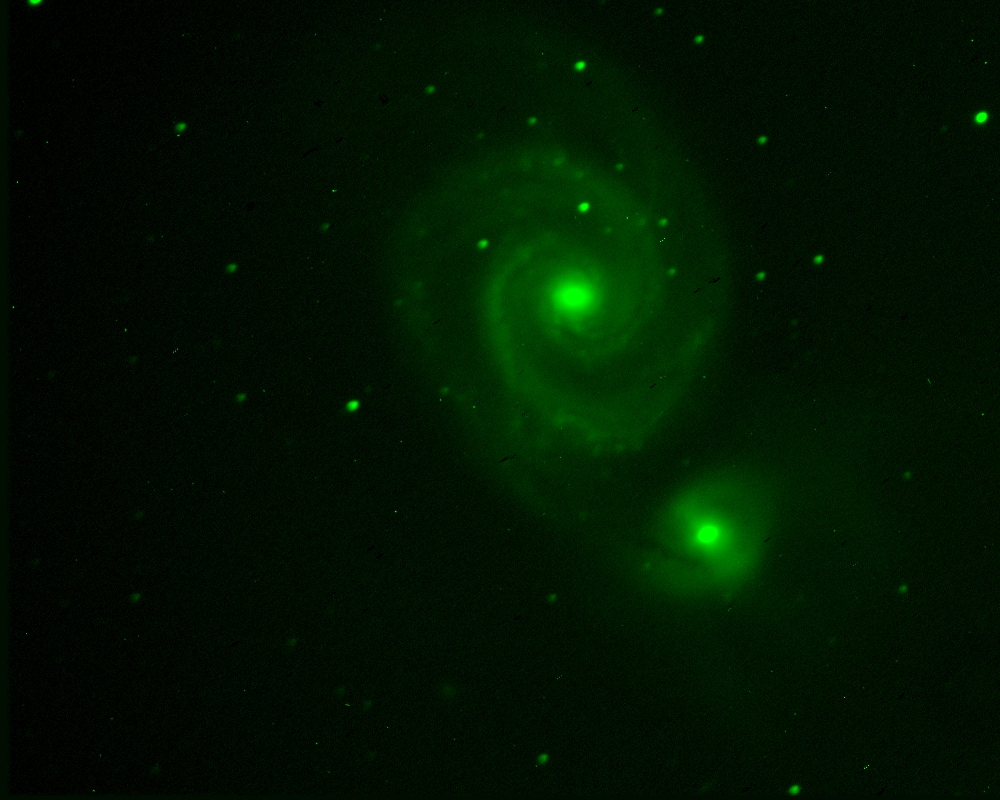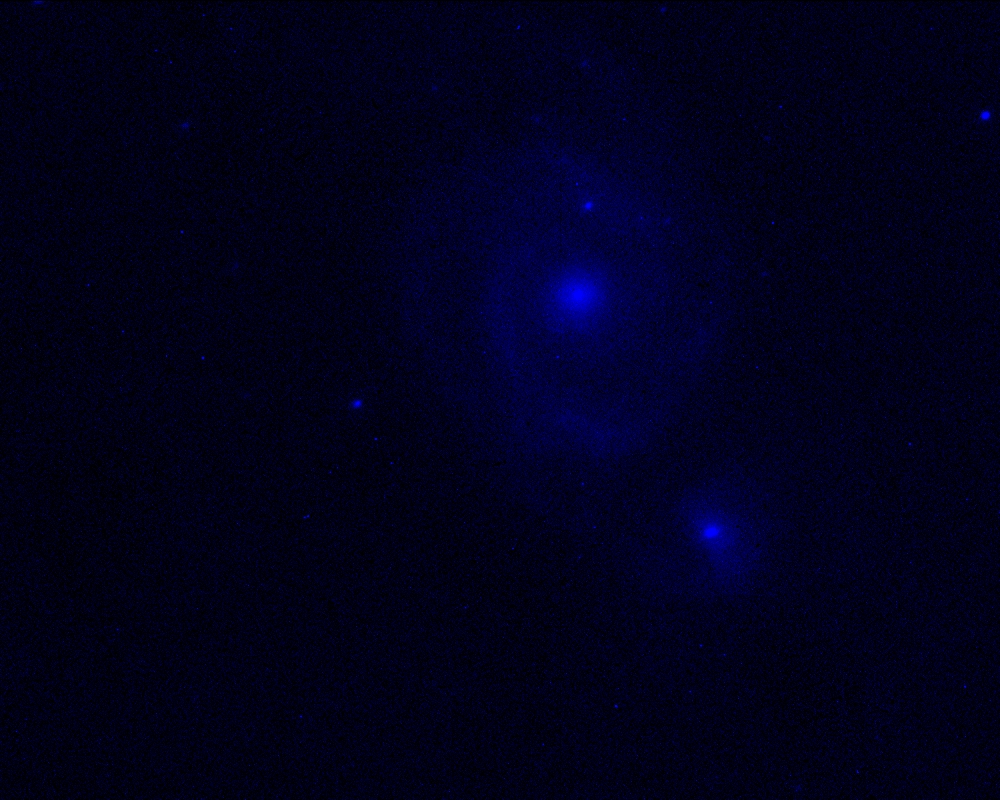Astronomy Research
M51 Galaxy
In order to create an image of the M51 Galaxy, I used Dartmouth’s Celestron reflecting telescope in combination with a CCD camera. I took 3 pictures using each filter, with an exposure of 3 minutes for each picture. The three filters we used were B, R and I band. I also took 3 pictures with the shutter closed with the same 3 minute exposures to get dark images. The telescope is mounted on a tracking arm so that it moved to compensate for the Earth’s rotation allowing the camera to be fixed at one point in space. The telescope is mounted on the roof of one of the taller buildings on campus to minimize ground lights.
Using the 12 images I took with the telescope, I first added all the dark images together to form a master dark. Then, I took the remaining 9 images and subtracted the master dark from those pictures. This helped to get rid of the bright pixels on the image sensor. The B band images were slightly more complicated and needed to be divided by a flat image. Since the flat image had a different brightness, I needed to multiply the brightness of my B band images by 11,000. Since there were 3 images for each wavelength band, I added the images of the same bands. Since the telescope was not perfect at staying in the same spot, the images needed to be shifted before being added. The end result was three images that were free of bright pixels and averaged between 3 pictures to provide accurate and clear images of the M51 galaxy in the B, R and I band.
The images display a spiral galaxy with an adjacent smaller galaxy. After submitting the image to nova.astrometry.net I was able to determine that the image is 0.96arcseconds/pixel and the size of the image was 16.2 by 12.9 arcmin. Given that the image is 0.96arcseconds/pixel and the galaxy’s extent on my image is approximately 600 pixels, then that makes the angular size of M51 about 576 arcseconds. Using the small angle theorem, I was able to estimate the size of the M51 galaxy to be 65,000 light years. By comparison, the Milky Way galaxy is 100,000 light years across.




